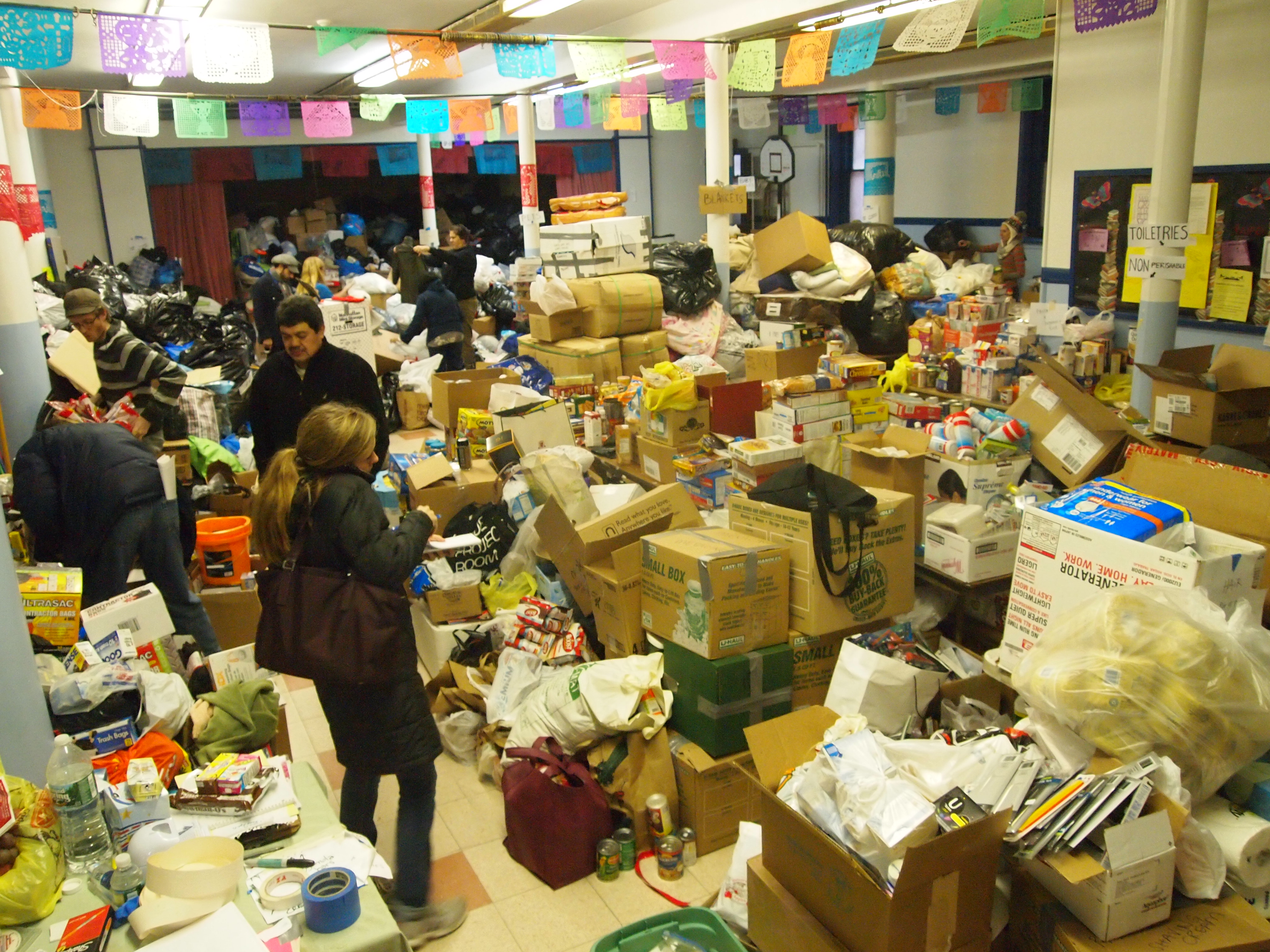The pairing of networks and movements is transformative, representing a new kind of leadership, visibilizing of power and privilege, and being capable of addressing natural disasters at a large scale.
What follows are my reflections from: Leadership Learning Community’s webinar called “Self Organized Leadership in Networks,” by June Holley (Network Weaver) and Tammy Shapiro (Movement Net Lab). Here’s the link to the video recording.
The self-organizing process
The movement network Occupy Sandy was able to mobilize people to match opportunities and resources, build a distributed network, and develop autonomy among a broad group of people. Once individuals can understand a) the principles that guide the work, and b) the infrastructure of the network, they can act autonomously toward bigger goals. This is called self-organizing and is a major difference from status quo non-profit organizing. In the image to the right (developed by Movement Net Lab), these 5 stages represent a self-organizing process, moving from a disconnected group of individuals to working groups, and eventually toward autonomous sub-groups with externally focused work. This structure inherently promotes a sense of freedom that allows for innovation and emergence within a network.
The biggest lesson that Tammy learned was that we need to be able to see our network, or make a map of the relationships within the group. She said,
“Power, and therefore ability to take leadership, often gets concentrated because only some individuals have information about what the network looks like.”
Once a map is created, distributed, and many people can understand and act on it, power becomes more distributed.
Another major distinction between networks and organizations is the difference between coordinating and managing. Networks often require coordination, while organizations require management. Within the U.S. and the context of businesses and non-profit organizations, we are more comfortable and more skilled at managing. We need to learn how to coordinate (and support the leadership of others) rather than manage. Check out this cute graphic developed by Movement Net Lab that shows other network roles:
<img class="aligncenter wp-image-11533 size-large" src="http://movementnetlab.org/wp-content/uploads/2015/10/Screen-Shot-2015-10-21-at-7.27.18-PM-1024×638.png" alt="Screen Shot 2015-10-21 at 7 xenical price.27.18 PM” width=”669″ height=”417″ srcset=”http://movementnetlab.org/wp-content/uploads/2015/10/Screen-Shot-2015-10-21-at-7.27.18-PM-1024×638.png 1024w, http://movementnetlab.org/wp-content/uploads/2015/10/Screen-Shot-2015-10-21-at-7.27.18-PM-300×187.png 300w” sizes=”(max-width: 669px) 100vw, 669px” />
Network Roles
Finally, there was a great question from the webinar audience regarding networks being able to have a greater ability to address power and privilege. The response is a work in progress, but draws on other work that Movement Net Lab has engaged in with the Peoples’ Climate March and Black Lives Matter. In a nutshell, to the extent that (access to) resources are critical to issues of power and privilege, networks present 3 main opportunities: 1) transparency around where those resources are located, 2) more democratized decision-making around their use, and 3) more distributed crowd-sourcing of them. First, a network’s main job is to move resources and information to where they need to be – in places of opportunity where people can act quickly. This is a distinction from organizations/businesses, which have a vested interest in cordoning off resources and accumulating them. Second, distributed networks can have a vastly different decision-making process, one that can be based on asynchronous voting from any place in the world, rather than a closed board room meeting. Technology is growing to support this. As this grassroots, participatory decision-making gets tinkered with, it presents a new, more democratic form of governance. Third, new forms of funding and fundraising are emerging that can represent a move away from reliance on large grants or other concentrated sources. When innovative foundations thinking about supporting networks, donor-lead networks, and crowdfunding are connected to grassroots decision-making processes, resources become unlocked and available in new ways.
In sum, we’re seeing a new form of organizing emerge: networked movements. These giant, decentralized groups of people represent a set of values that challenges the status quo and power structures of “traditional” organizing. They present a hopeful vision of the future, where individuals are empowered to act, decide, and make transformative change at a large scale.
Originally posted on http://arilikeairy.org/reflections-from-self-organized-leadership-in-networks-webinar/


The bridger/introducer type roles mentioned above are made more effective through being made attractive, which encourages potential new partners and collaborators to approach them. I call them ‘magnetised brokers’ within the system. They gain their magnetism by having not only good connections but also sought after skills that are valuable to those within and seeking entry to the system. Criminal networks work this way, and we can steal their approach and use it for good. I explore this here: http://cuttingedgepartnerships.blogspot.co.uk/2015/05/why-should-devil-have-all-best.html Point 3 deals with ‘magnetised brokers’.